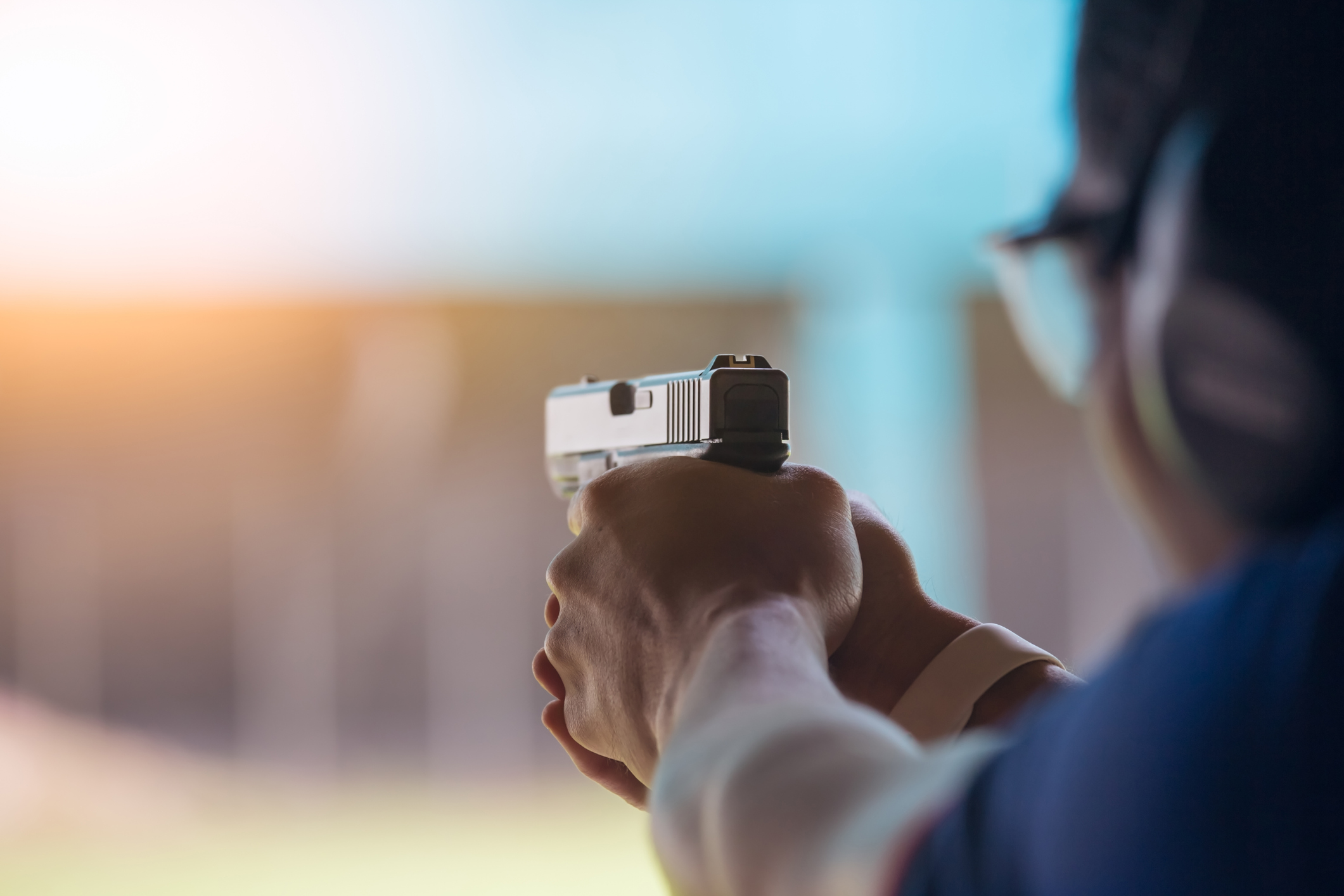
09 Jan Getting Into Competition Shooting: Pistols, and Rifles, and Shotguns, Oh My!
If you’re curious about the different styles and categories shooting competitions out there, rest assured- there is truly something for everyone and for all ages. Aside from picking which to pursue, the hardest part of shooting a competition is going for the first time not knowing what to expect. I recommend attending a competition you want to shoot before ever competing. The range that’s hosting the match can answer a lot of questions you may have about a competition, but each Match Director and club has a particular way of doing things.
I’m coming from the perspective of pistol-based matches and one of the biggest mistakes I made as a new shooter was thinking I had to get a ton of gear to get started. Shooting communities tend to be very friendly and tight knit. As a result, I’ve borrowed and tried many gear items from other shooters before buying my own equipment. The hardest item in my opinion is choosing a competition belt that is comfortable, durable and holds your magazines and firearm. From there, the next items you need are a competition holster, at least 5 magazines, and magazine pouches.
I am lucky enough to have shot a lot of different types of shooting competitions over the years. Here are the competitions I’ve participated in and a little bit about each type:
GSSF Matches
My very first shooting competition was a Glock Sport Shooting Foundation (GSSF) match. You can only shoot Glocks, but the only gear you need to shoot a match is a gun and at least 4 magazines.
A match consists of three stages – Glock’M, 5 to Glock, and Glock the Plates. Glock’M is four paper targets and one steel target. They are all at varying distances, but there are two shots on paper and one on steel. You shoot the stage three times in a row and the beauty of GSSF matches is you can shoot them in any order. When you’re just getting started, try shooting left to right, right to left, and even front targets first, then back targets. 5 to Glock is five paper targets you hit twice each. This stage you also shoot three times and can be shot in any order. Practicing double taps comes in handy when you go up to shoot this stage. When you shoot your first shot you then only have to let up your finger enough for the trigger to reset instead of letting off all the way. This gives you a competitive advantage to pull the trigger again quicker. Your closer targets are shot much quicker than the ones further away so take your time and work on accuracy. Glock the plates is six steel plates on a plate rack you have to knock down or hit (in pocket pistol division). This is the only stage you shoot four times.
What I have learned about steel is that it is the most fun and yet the most challenging. It gives you instant feedback on whether or not you are hitting your target. When you miss a plate, move on to the next one, and shoot the missed one last. When you leave a plate up and continue to shoot at it, you focus so much of your time and energy that it’s easy to lose track of your round count. It also can make it discouraging to finish. Overall, GSSF is a great first-time shooter match and easy to get the gear to start with.
Steel Challenges
Steel Challenge matches are also really easy to get into because the only gear you need is a gun, holster, and at least 4 magazines. You can shoot a variety of guns including single stack pistols, rimfire pistols, iron sight revolvers, carry optics, pistol caliber carbine, and more. Steel targets are set up at various distances and as pictured here in the middle, can sometimes have what’s called “stop plates” which would be the last target you want to hit. Targets can be all different sizes as well so it’s really great practice for focusing on your front sight and slowing down when it matter to hit the smaller size targets. What makes steel challenges so simple and yet difficult, is target size and the order you shoot them in. In this same photo, it’s easy to shoot four large targets quickly, but hard to slow down and hit the small stop plate. A good way to practice for these matches is to shoot paper targets to see where you are hitting since steel isn’t the best way to practice your accuracy.
USPSA
USPSA matches are where you really get to test your gear out. Find a competition holster you can quickly draw from without a leather strap, a button you have to press down on, or anything that isn’t quick draw. Depending on the division you want to shoot (carry optics, production, limited, etc.), you want to get five to six magazines for your firearm. You load your pistol before shooting a stage so I like to have four other loaded magazines on my belt. The belt is also really important here. You want to look for something thick and durable that can carry the weight of your gear especially while running.
USPSA is all about shooting and moving and uses a mix of paper and steel targets. My favorite division is production because you can only have 10 rounds in each magazine so it makes it that much more challenging. The stages are designed to test your ability to count your rounds especially when shooting two shots on paper and one on steel. The unique part about USPSA is you get to choose how you want to shoot each stage. Some shooters are strong going left to right and moving from downrange to uprange. Some shooters start on the right, go uprange, downrange, and finish the targets on the left last. Stages are typically released a day or two before the match so studying really helps you figure out a strategy for each stage and when you will reload your firearm.
USPSA scoring is confusing at first, but when you’re getting started, focus on being as accurate as possible. Your raw time, penalties, and your major or minor power factor of your ammo all go into your scoring. Each USPSA match has a stage that’s called a classifier. These are typically very simple stages to shoot and the point of them is to determine what “class” each shooter should be competing in. Member classification is based on the best 6 of the most recent 8 unique classifiers on file, with a few exceptions. You start as unclassified, then there are A-D classifications, master, and grand master.
Cowboy Action
Cowboy Action Shooting has become my favorite type of shooting competition. There are a lot of guns and gear that go into cowboy shooting, but I have been shooting matches for a year without having all of my own items. The community in Cowboy Action shooting is incredible. It’s a sport that is more at risk of dying out because there’s an education process to get people involved.
The best advice I can give is to attend a match, talk to shooters and let them know you’re interested, but don’t have the guns or gear and see what happens. My home range was able to set up a new shooter program to provide guns and ammo when a new shooter came to a match. I’ve been offered to shoot so many people’s guns and borrow gear almost every match I’ve been to. The guns involved are two revolvers, a rifle, and a shotgun. The gear needed is a shooting belt with two holsters, a shotgun belt, cowboy boots, and a cowboy hat.
If you fancy old fashioned single action firearms, there are so many categories in Cowboy Action Shooting, you’ll find a joy in shooting any one of them. I chose to shoot .38 special in my pistols and rifle to get started and eventually want to shoot black powder. One of the most unique categories of Cowboy Action is called Gunfighter. This is when you shoot a stage with a pistol in each hand alternating shots. There are so few gunfighters in the world today.
Each stage is written with a shot sequence for your rifle and pistol. You are given instructions to shoot three targets in a 3-4-3 sweep meaning three shots on the far left target, four on the middle, and three on the right. Stages can then have two to even eight shotgun targets to knockdown and typically are shot in any order you prefer. Match directors do a great job of changing up stages so you’ll rarely shoot the same stage all the time.
3-Gun
My first 3-gun match was by far the hardest competition I’ve ever shot. 3-gun is an endurance and accuracy competition requiring expertise in pistol, rifle and shotgun. There’s a lot of strategic thinking that comes in to play in 3-gun as you can shoot targets in any order you want. Your shotgun needs an extension tube on it because most stages shoot anywhere from 10 to 20 shotgun targets.
The same gear for USPSA is needed for your pistol – a belt, a holster, magazines, and magazine pouches. I also like to carry an extra rifle magazine in a rifle magazine pouch on my belt. A shotgun shell caddy is crucial when it comes to loading your shotgun quickly. This can be worn on your belt or some people have a separate belt above their shooting belt just for their shotgun caddy and rounds. I always tell people that a shotgun really makes or breaks your entire competition. Learning to load your shotgun with a double load or quad load is really important as it takes the most time. When you load your shotgun, flip it upside down on your shooting shoulder, grab a double or quad load with your shooting hand, load it upside down, and then flip it back to start shooting. There are different divisions for 3-gun, but it all depends on what divisions the match are running so check with your local match to see what the categories are.
The best way to practice is to work on your breathing exercises, double taps, and transitions from one gun to the next. Because there is a lot of movement in 3-gun, I recommend doing cardio and either dry firing at home while your heart rate is up, or do it at the range if it’s an outdoor range. Practice shooting alternating double taps and single taps as well while your heart rate is up. Learning to breathe while shooting is crucial. When you are transitioning guns, make sure you follow safety protocols meaning putting the safety on, putting your pistol in a bucket safely, etc. It’s easy to focus on the next gun you’re about to grab before securing the one you just shot, and that’s where a lot of people make mistakes and disqualify.
There are so many more competitions out there, so look around at your local area and see what they have to offer. Some quick tips to a fun match are investing in a gun cart, bringing sunscreen, snacks, water, and a chair to sit in. Be prepared to spend all day at the range when you sign up for a match. Ask questions of range officers and other competitors. Check out guns and gear of other shooters and try out everything you can. Most importantly, have fun and share your experience with others!
About the Author: Kenzie grew up hunting and fishing with her grandfathers and dad in Florida, Alabama, and Louisiana. After a quick Google search, Kenzie found the Rifle Association at Florida State University and landed a spot on the pistol team. She quickly took up competitive shooting and now shoots GSSF, USPSA, Cowboy Action, 3-gun, 2-gun, Steel Challenges, and is always looking for more! Her favorite pistol is the Gen2 Glock 17 her dad gave to her as her first firearm, favorite rifle a Daniel Defense V7 she purchased for her birthday, and favorite shotgun an SKB 100 that is no longer made. Her passion is teaching others to shoot and bringing more people to competitions.


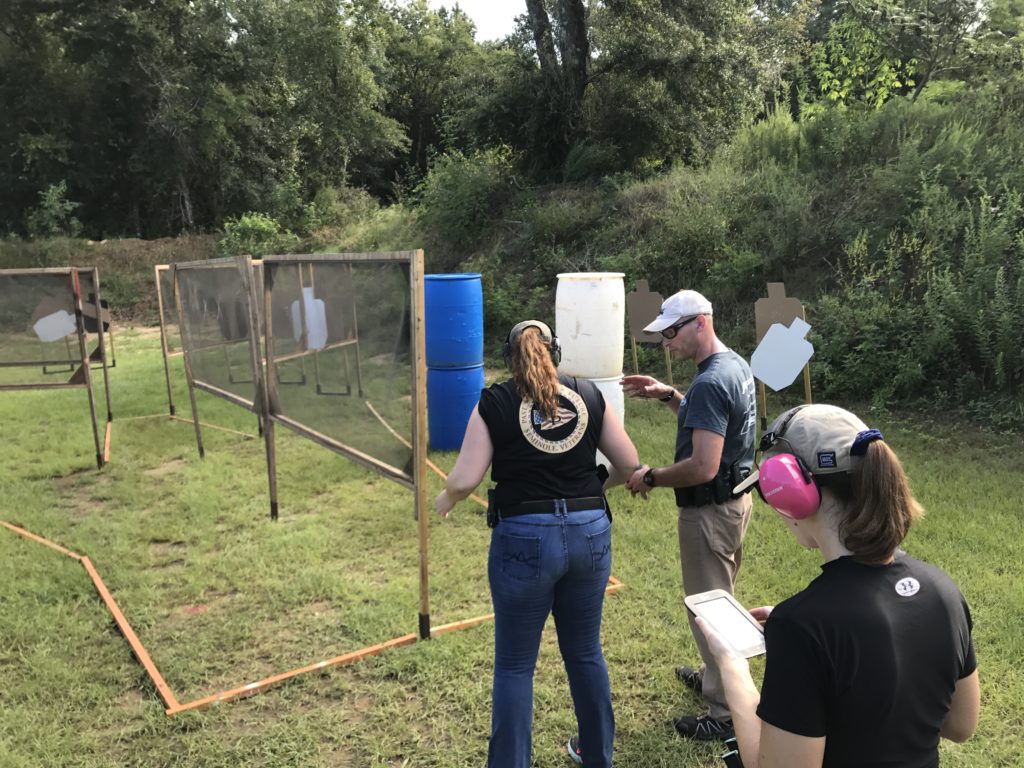
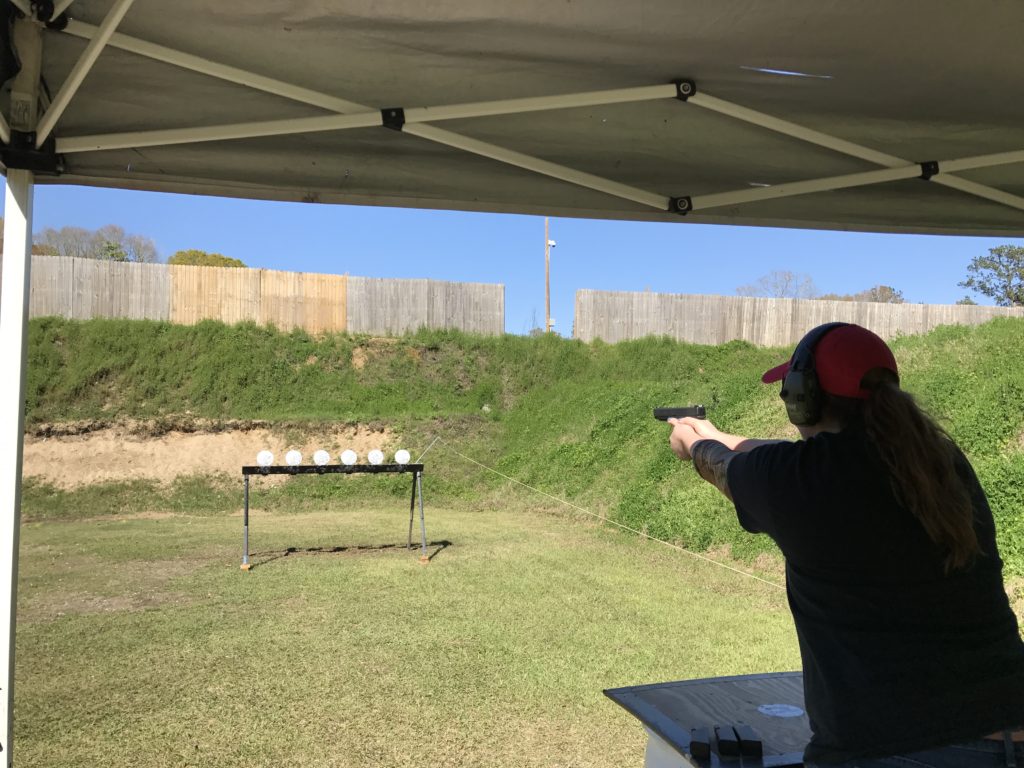


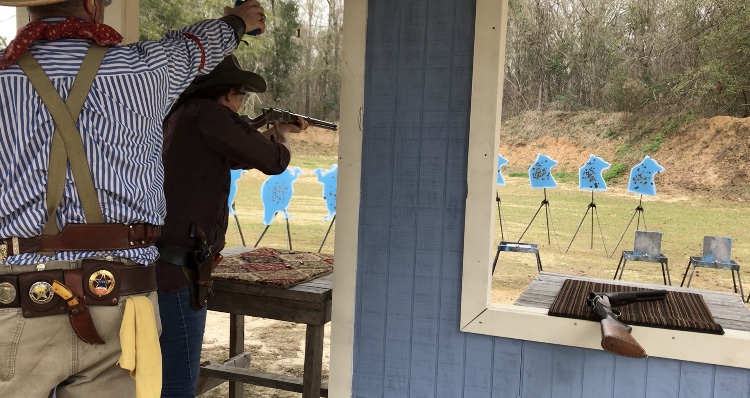
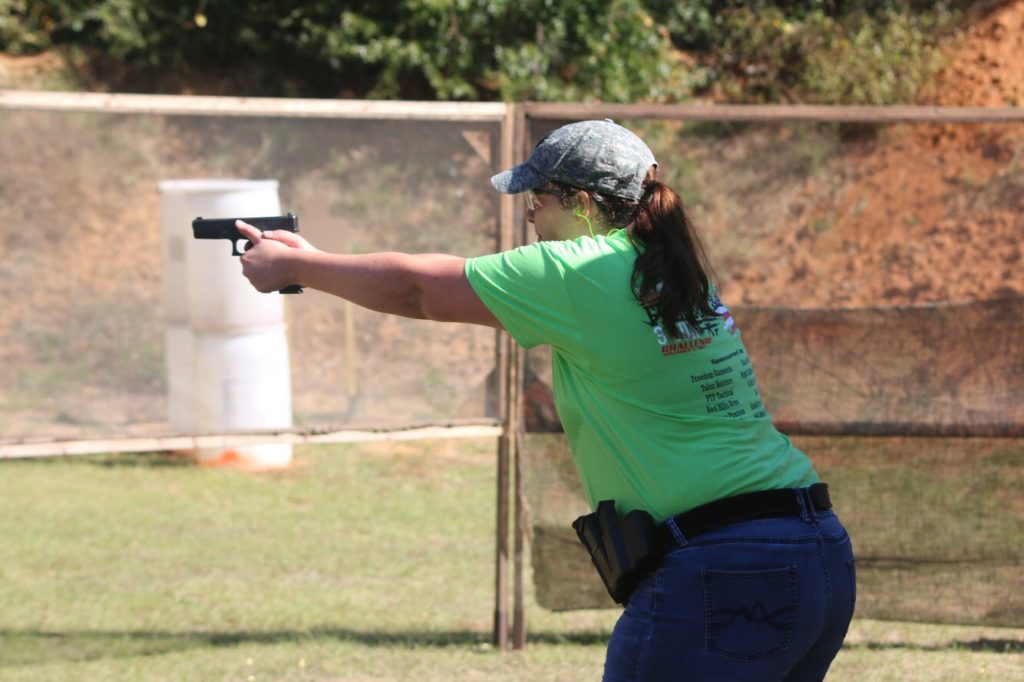
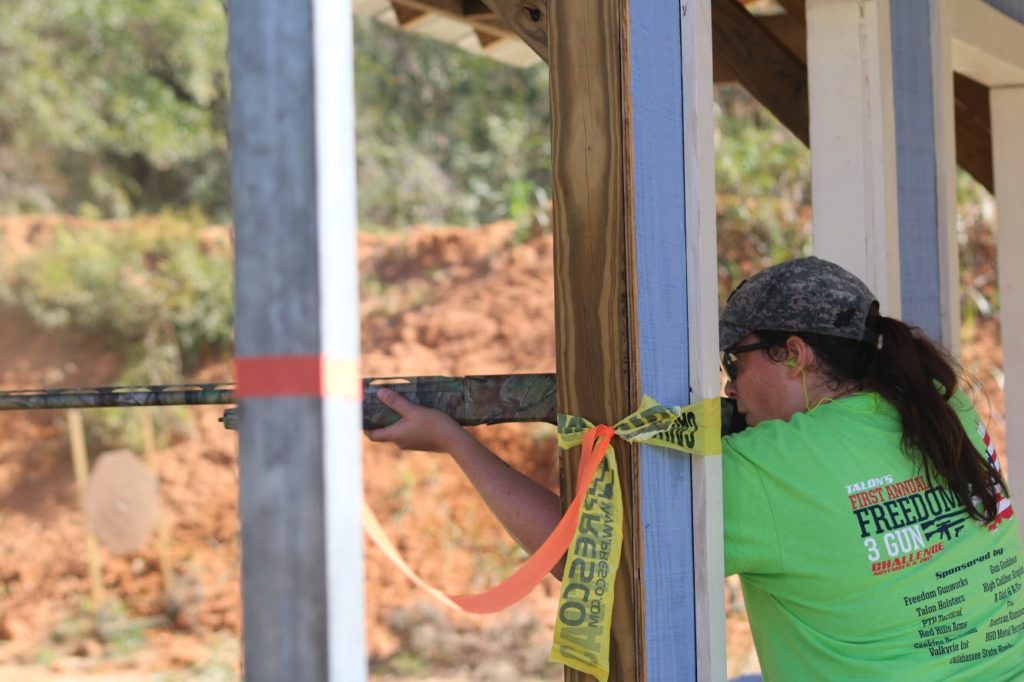
Carlo Trapani
Posted at 22:13h, 23 AugustBeautiful BIG sorry I not speak English beautiful e royal